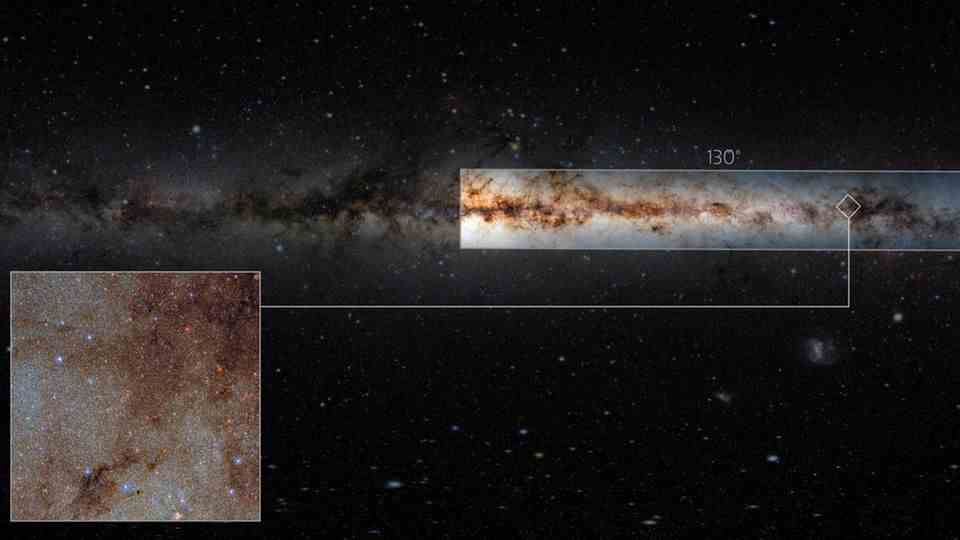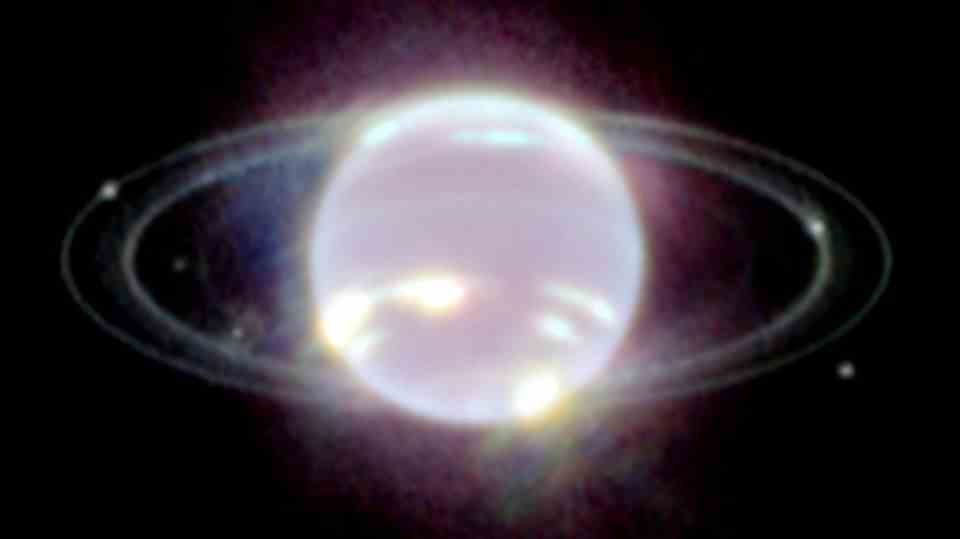space photography
Spectacular image from space shows more than three billion stars in one image
The impressive images of the Milky Way were taken with a Dark Energy Camera
© NOIRLab
A Dark Energy Camera recorded more stars and celestial objects in Chile than ever before. The images show just 6.5 percent of the night sky.
New images of space and the Milky Way show more celestial objects than ever before: over three billion stars and galaxies can be seen in the photos. The images were captured using a Dark Energy camera mounted on a telescope in Chile.

An enlargement of the recorded celestial objects of the Milky Way
© NOIRLab
Detailed star “group photo”
The camera had recorded the sky of the southern hemisphere for more than two years. The resulting images show exceptionally detailed stars in the Milky Way as well as distant galaxies.The National Science Foundation’s “NOIRLab” released the images on Wednesday. The “NOIRLab”, which stands for “National Optical-Infrared Astronomy Research Laboratory” is funded by the US government and conducts research, among other things, on optical infrared astronomy. This is an experimental part of astronomy that uses infrared radiation emitted by celestial bodies.
It’s like taking a group picture and not only being able to distinguish each individual but also the color of their shirt, says lead researcher Andrew Saydjari. He is a graduate student in physics at Harvard University. “Even though I’ve stared at the images with the tens of thousands of stars for many hours, I’m not sure I grasped the magnitude of these numbers,” Saydjari said.
Just 6.5 percent of the night sky photographed
According to the researcher, only 6.5 percent of the night sky was imaged during the sky survey. Such a survey systematically searches and maps the sky for objects. The latest survey includes the results of a study published in 2017 that identified two billion celestial objects, primarily stars.

“The Milky Way galaxy contains hundreds of billions of stars […]. Mapping and cataloging these objects is a Herculean task,” says NOIRLab. According to Saydjari, the survey is the largest catalog ever produced by a single camera in terms of the number of celestial objects observed.
Sources: “NOIRLab”, The Sydney Morning Harald


